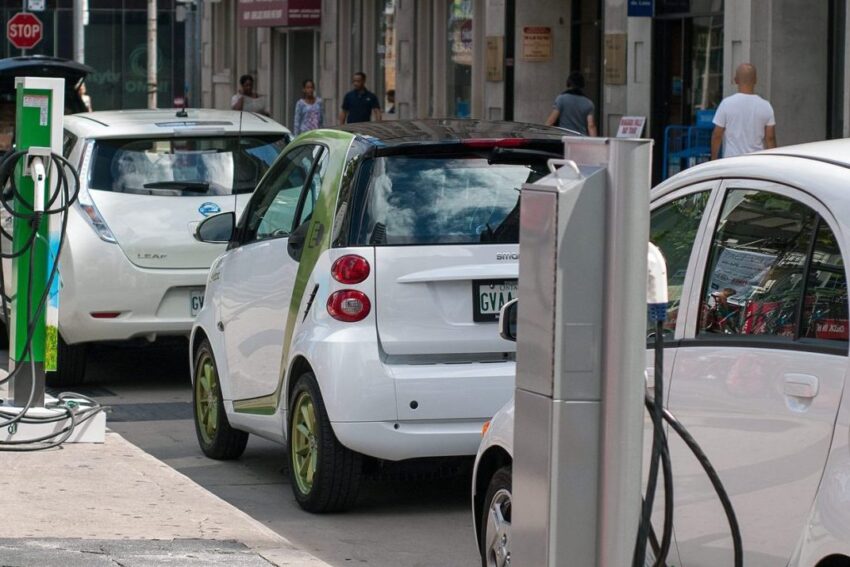AG INSIGHT | 25/03/2019
Staying ahead of the market

Andy Walker, Technical Marketing Director at Johnson Matthey, outlines the technological opportunities for Johnson Matthey from being at the forefront of the transformation in the automotive market.
The coming decade will see more change in the automotive sector than we have seen in the previous 100 years. New conditions require new thinking, and at Johnson Matthey our understanding of incoming regulations, market drivers and our cutting-edge technologies, alongside our relationships across the value chain, from vehicle manufacturers, to securing and managing reliable, ethical supplies of raw materials, means we are uniquely placed to help decarbonise the transport sector – now the largest emitting sector of the UK economy.
An ‘all options’ approach to technology
Decarbonising the transport sector is a huge challenge, as there is no silver bullet for the future of low and zero-emission mobility. We believe that over time, all automotive powertrains will become electrified as the world moves to battery electric vehicles (BEVs) and fuel cell electric vehicles (FCEVs). This will create many opportunities for Johnson Matthey in the battery materials area, where we have developed class-leading high energy cathode materials for use in BEVs, and in the membrane electrode assembly area, where we have best-in-class technology for the on-board generation of electricity from hydrogen plus air in FCEVs. And, of course, all FCEVs contain a battery, so there are synergies between these battery and fuel cell activities.
However, this transition from the internal combustion engine (ICE) to electric powertrains will take place gradually, and the ICE will continue to play a critical role in transportation for many years to come. Hybrid powertrains will be an increasingly important part of this transition from all-ICE to all-electric powertrains, since they offer a good route for CO2 reduction from ICE-powered vehicles.
This presents opportunities for Johnson Matthey to use our expertise to continue to work with our automotive customers and other key stakeholders to optimise catalyst-based emission control systems to ensure that these ICE-based vehicles emit very low levels of criteria pollutants (CO, hydrocarbons, nitrogen oxides and particulate matter), as well as emitting reduced levels of greenhouse gases. For example, cars, buses and trucks with improved fuel efficiency (and therefore lower CO2) generally have lower exhaust gas temperatures, so new catalysts need to be developed to work effectively at such temperatures.
For some applications, such as aviation, liquid fuels will still dominate, but we will see a move towards the use of bio-, waste- or synthetically-derived fuels. These alternative fuels will be enabled by advanced catalyst and process technologies developed by JM scientists working collaboratively with customers and partners. Then of course there is the need to deliver Hydrogen for the fuel cell vehicles, with a transition towards reduced carbon manufacturing options including electrolysis and Steam Methane Reforming with Carbon Capture and Storage.
The role of regulation and policy
In looking at where we can create the most value as powertrain technologies evolve, there are four aspects of policy that drive commercial opportunities:
1. Tightening regulations on criteria pollutant emissions continue to be an important factor in new vehicle design. For Johnson Matthey, one of the most important trends for the future is the shift to testing and compliance regimes that better reflect emissions in ‘real world’ use, to comply with these tightening regulations. The new tests require higher system performance across a wider range of conditions and as a result demand more high-performing technology, driving innovation and investment in catalyst-based emission control systems,
2. There is an increased focus on the fuel efficiency/CO2 emissions of new vehicles, in both the passenger car and commercial vehicle sectors. For example, the European Union is about to ratify the next stage of CO2 regulations for passenger cars, which will require CO2 emissions of passenger cars to be reduced by 15% from 2021 levels by 2025, and by 37.5% (again from 2021 levels) by 2030. This legislation will require improved catalyst systems for ICE-based powertrains, able to work at lower and lower exhaust temperatures, and will also further accelerate the introduction of BEVs and FCEVs, increasing demand for JM’s battery materials and fuel cell components.
3. The global automotive market is also being shaped by government incentives for drivers to buy low or zero emission vehicles. These may be financial in the form of purchase grants, or preferential tax rates. In some countries, like Norway, drivers of low emission vehicles are granted perks such as access to bus lanes, free municipal parking in cities and no road tolls. These incentives shape demand in local markets and can be important in the early adoption of new technologies. For example, Norway has set a target for all new car sales to be BEVs from 2025; they are making good progress towards this target – in September 2018, 45% of all new cars sold in Norway were BEVs. By comparison, only around 1.3% of all vehicles sold globally in 2018 were BEVs.
4. For the future, we see cities as increasingly important in driving and shaping demand for clean vehicles. In most parts of the world, city authorities are responsible for meeting strict air quality targets. To meet these legal requirements and the expectations of their citizens, they are increasingly offering incentives for cleaner vehicles and applying penalties or even bans to dirtier ones. We’ve been working with cities for decades to improve their air quality, retrofitting emissions control to buses and supporting Low Emission Zones, so we understand how such policies can improve local air quality and create opportunities for the introduction of new technologies
Future mobility models
Our automotive-facing businesses have been designed from inception to anticipate change. Change brings continuous demand for new technology, and it is through the development and application of new technology that Johnson Matthey creates value.
We pay attention to the way that vehicles will be used in the future because this will affect the way they are designed and sold today. Major trends in the medium to long term include the introduction of autonomous vehicles and an associated increase in car sharing. For example, cars bought to be used in fleets of shared vehicles may be designed with the same considerations that now apply to commercial vehicles – cost per mile, durability, availability / up-time.
Autonomy will be an enabler of shared mobility and will also lead to a change in drive cycles and vehicle design, so autonomous vehicles will have different power requirements. Connectivity, as well as being an enabler of vehicle autonomy, provides new opportunities for monitoring and regulating vehicles and their emissions in use. We believe in turn, this is likely to promote the adoption of more zero and low emission technologies.
As a company at the forefront of technology development, we foresee a period of fundamental transformation in the automotive market. It brings opportunities for us to advance our business and our vision for a cleaner, healthier world. And Johnson Matthey is embracing it, knowing that we are uniquely well placed to understand and deliver the technologies the market will require.
Andy Walker is Technical Marketing Director at Johnson Matthey



